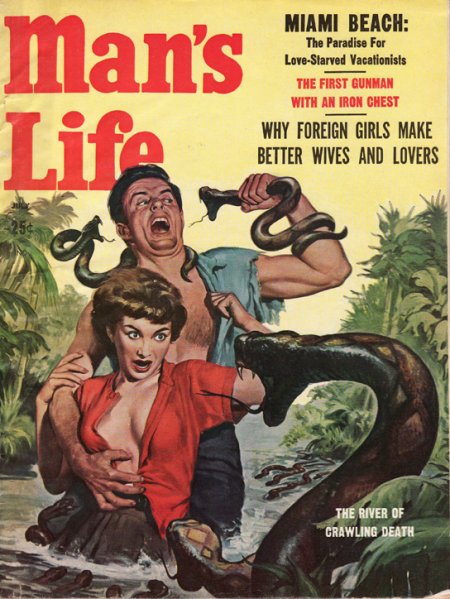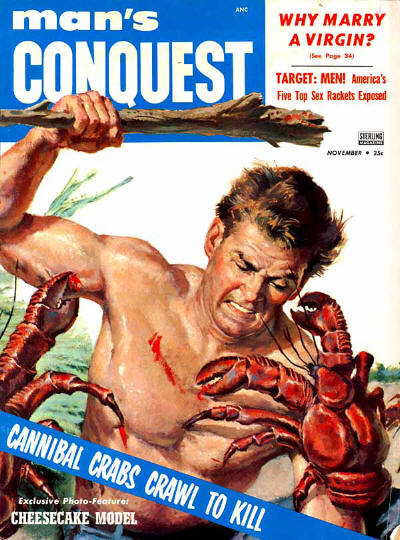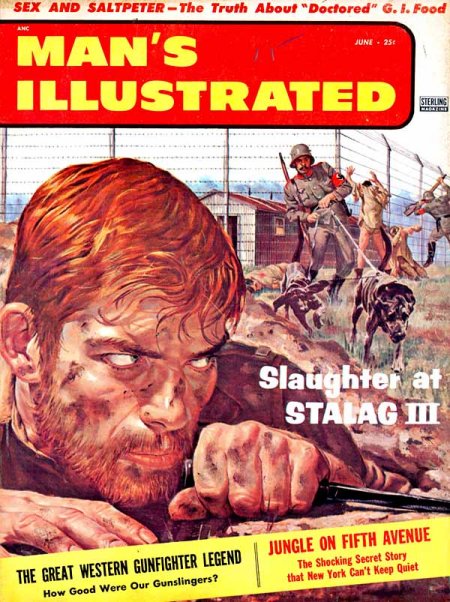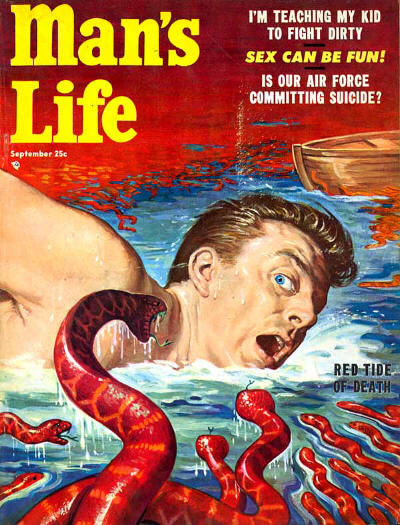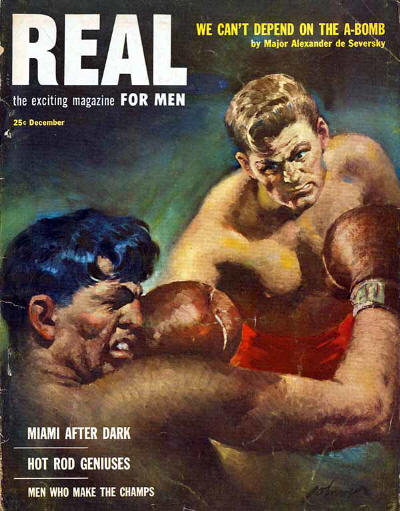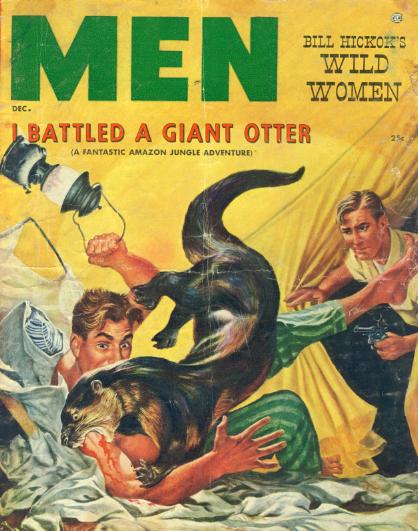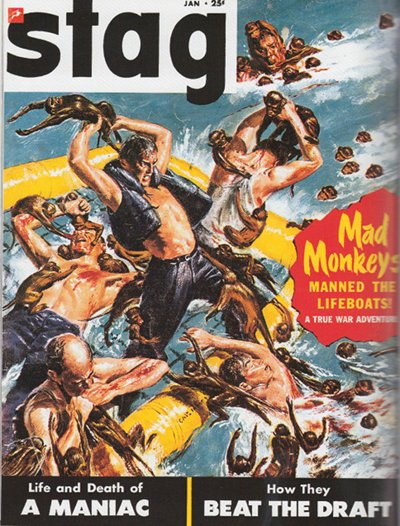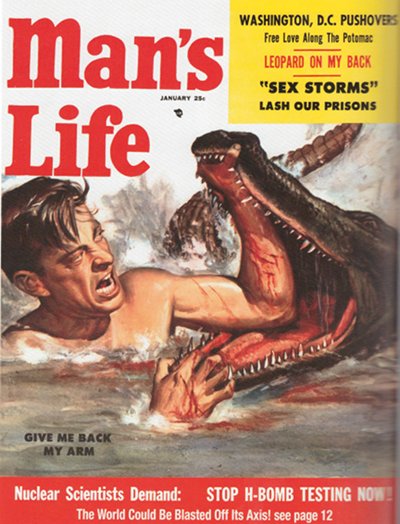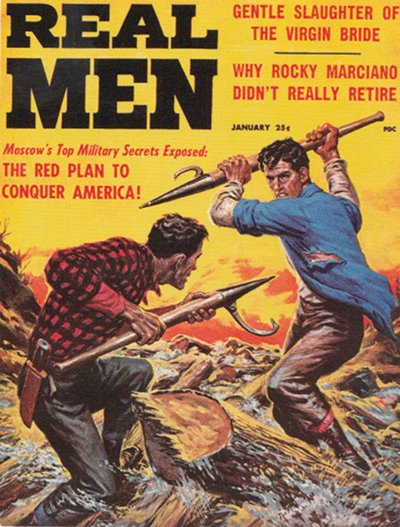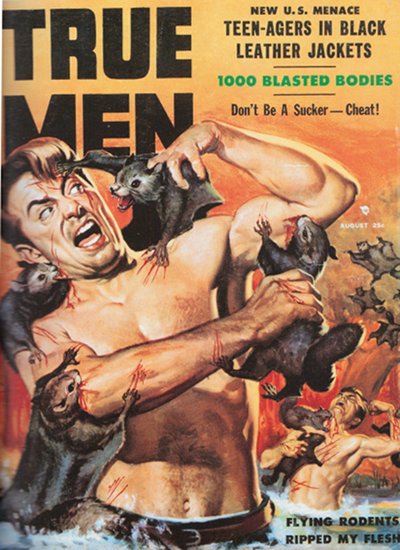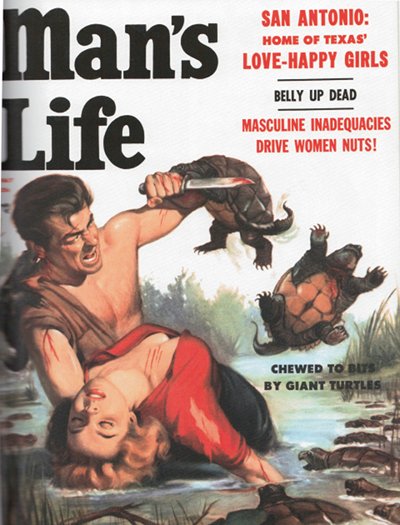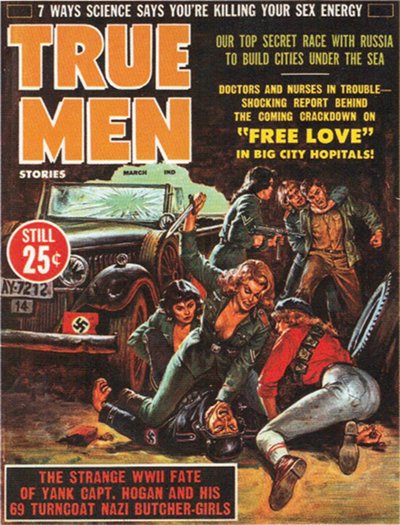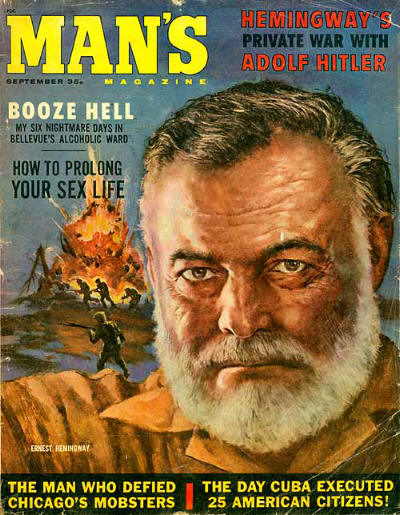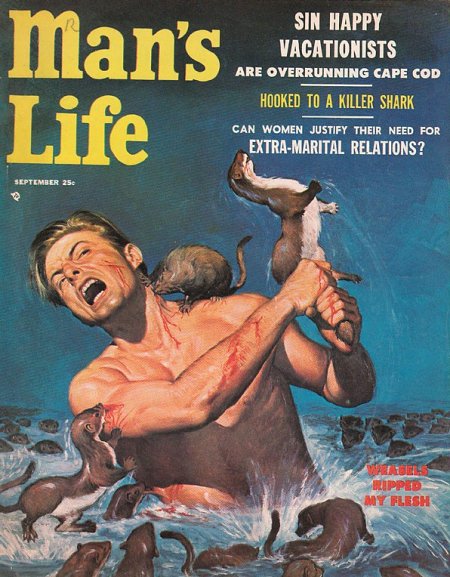
Before Men’s Health and Maxim Magazine, before the men’s magazine category was dominated by glossy, slick publications, there were the “He-Man,†“pulp,†or “sweat magazines.â€
These “men’s adventure†magazines catered to men of a different generation and reflected the taste and sensibilities of those men. The readership largely consisted of GI’s who had fought and survived the Big One, men who had experienced both adventure and gruesome death and violence. In contrast to their experiences overseas, life back home seemed dull and mundane. Their wives and families who hadn’t experienced the horrors of war had only vague notions of what things had been like “over there.†In a life that seemed sterile and scrubbed clean, men’s magazines were an oasis of the kind of unfettered manliness and grit the men were used to. And to the men who hadn’t served, the magazines were a chance to live such adventures vicariously.
Products of the time, the magazines were certainly not politically correct. Instead of articles about $10,000 watches and luxury vacations, the pages of the sweat magazines were filled with “true†(typically fictionalized or embellished) stories of war, survival, crime, safari, and the Old West. A favorite theme was the showdown between man and wild flesh-eating beasts and critters. Stories of men rescuing women from the torture of savage natives or cruel enemy armies were common (as were tales of powerful Amazonian-like women and man-capturing gangs of female dominatrices). But the magazines generally adhered to the philosophy of famous salesman Elmer Wheeler, who said to “Sell the sizzle, not the steak.†The headlines of the magazines were far more lurid and sensational then the actual stories inside the magazine.
The magazines only cost 25 cents, and their insides were filled with cheap, pulpy pages printed only in black and white and packed full of ads for correspondence courses, baldness cures, and fitness programs. The centerpiece of the magazine was thus the cover which showcased glossy, colorful, and evocative artwork. The publisher would have an artist draw up a wild cover and then a writer would build a “true†story around it.
The popularity of men’s adventure magazines peaked in the late 1950s, when fifty different titles were published and hundreds of thousands of men picked up the magazines at the local drugstore or read them at barbershops. But as Playboy and then Penthouse came on the scene, and the courts loosened their restrictions on what was deemed obscene material, “the sweats†began to seem quite tame and outdated in comparison and couldn’t compete. They quietly disappeared in the 1970’s.
The cover art is still great to look at. Here are a few of my favorites:




